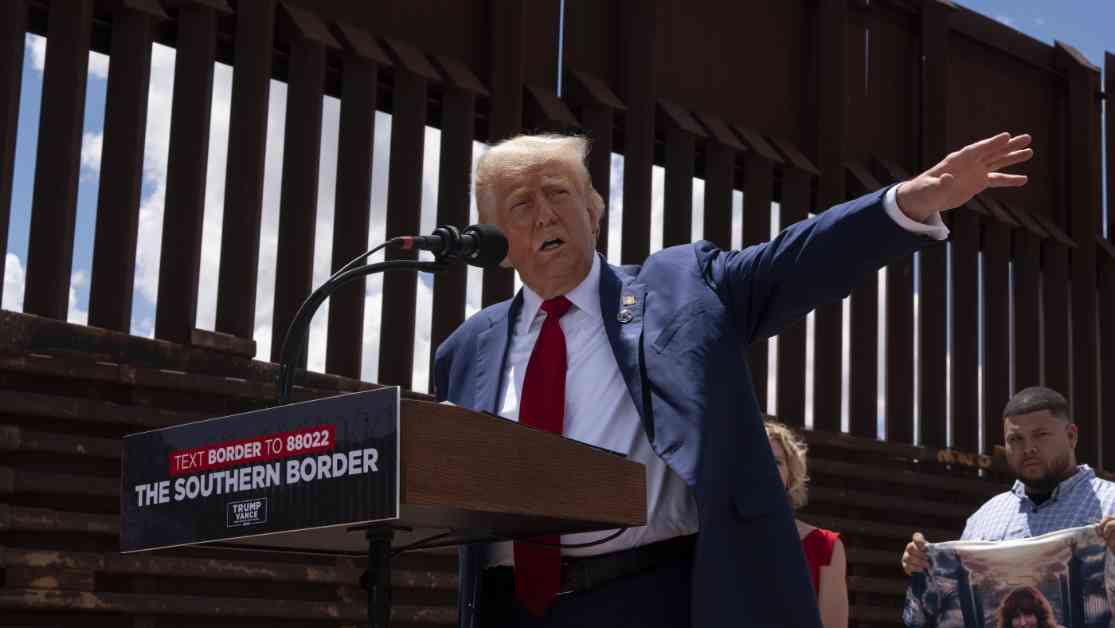On Tuesday, President Trump’s announcement regarding the imposition of sweeping trade tariffs on Canada, China, and Mexico, citing illegal street fentanyl as the primary reason, sparked a wave of concern and questions. The White House justified these tariffs by labeling the synthetic opioid as a catalyst for a “national emergency” that warranted immediate and decisive action. However, upon closer examination, experts in the field have uncovered a more nuanced reality beneath the surface.
Trump, in a series of statements, painted a grim picture of the fentanyl crisis, claiming that foreign drug cartels are responsible for the deaths of hundreds of thousands of Americans annually. White House spokesperson Karoline Leavitt further fueled this narrative by asserting that tens of millions of Americans had lost their lives to fentanyl. These alarming assertions, however, have been deemed inaccurate by experts in law enforcement, drug policy research, and public health.
While acknowledging the severity of the overdose epidemic, it is crucial to highlight that the actual number of deaths attributed to street drugs, including fentanyl, methamphetamines, heroin, cocaine, and others, peaked at around 114,000 annually during the most intense period of the opioid crisis in 2022 and 2023. Moreover, data from state and federal sources revealed a promising downward trend in fatal overdoses, with a significant 21% decrease nationally since June 2023, marking a noteworthy milestone in combating the crisis.
Canada’s Role in the Fentanyl Crisis
Contrary to the claims made by the Trump administration, Canada’s involvement in the U.S. fentanyl supply chain is negligible. While the fact sheet released by the White House suggested a growing footprint of narcotics distribution in Canada, experts unanimously agree that Canada plays a minimal role in fentanyl smuggling into the U.S. Data from the U.S. Drug Enforcement Administration further supports this, with only about 43 pounds of fentanyl seized at the northern border in 2024, compared to over 21,000 pounds seized at the southern border.
Prime Minister Justin Trudeau himself confirmed that smuggling from Canada contributes less than 1% to the fentanyl street supply in the U.S., emphasizing the disproportionate focus on a country that is not a primary source of the crisis. Trudeau’s assertion aligns with the actions taken by Canadian law enforcement to target fentanyl producers internally to curb the overdose crisis within their borders.
Mexico’s Impact on Fentanyl Trafficking
In stark contrast to the minimal role played by Canada, it is widely accepted that Mexican drug trafficking organizations are the primary producers of street fentanyl that floods into the U.S. The previous administration’s lenient stance on drug gangs, symbolized by the “hugs not bullets” approach, allowed cartels to flourish and infiltrate governmental structures. However, under the leadership of President Claudia Sheinbaum, Mexico has witnessed a significant shift towards escalated enforcement actions against drug gangs and enhanced cooperation with U.S. law enforcement officials to dismantle these criminal networks.
The results of these efforts are evident in the data, with a notable 20% decrease in the amount of fentanyl seized at the U.S.-Mexico border and a decline in the potency of fentanyl pills. President Sheinbaum’s proactive stance against drug cartels has been instrumental in curbing the flow of illicit substances across the border.
China’s Involvement in Fentanyl Supply Chain
The last piece of the puzzle in the fentanyl supply chain leads us to China, where precursor chemicals crucial for the production of street fentanyl are sourced and trafficked to Mexican drug gangs. For years, China’s reluctance to address this issue strained relations with U.S. officials, who were adamant about disrupting this supply chain. However, under increased pressure from the Biden administration, China implemented new regulations, cracked down on money laundering by drug organizations, and made several arrests to combat the illicit trade effectively.
These measures have yielded promising results, with reports indicating a slowdown in the pipeline of fentanyl reaching American streets and a subsequent scarcity of the drug in local markets. While China’s foreign ministry expressed concerns about the potential impact of the impending U.S. tariffs on drug trafficking cooperation, the strides made in recent months signal a positive shift towards eradicating this menace.
In conclusion, the evolving landscape of the fentanyl crisis underscores the multifaceted nature of the issue and the collaborative efforts required to address it comprehensively. By debunking misconceptions, acknowledging the nuanced roles of various nations, and leveraging international cooperation, we can strive towards a future where the grip of fentanyl on communities is loosened, paving the way for healing and recovery.






















